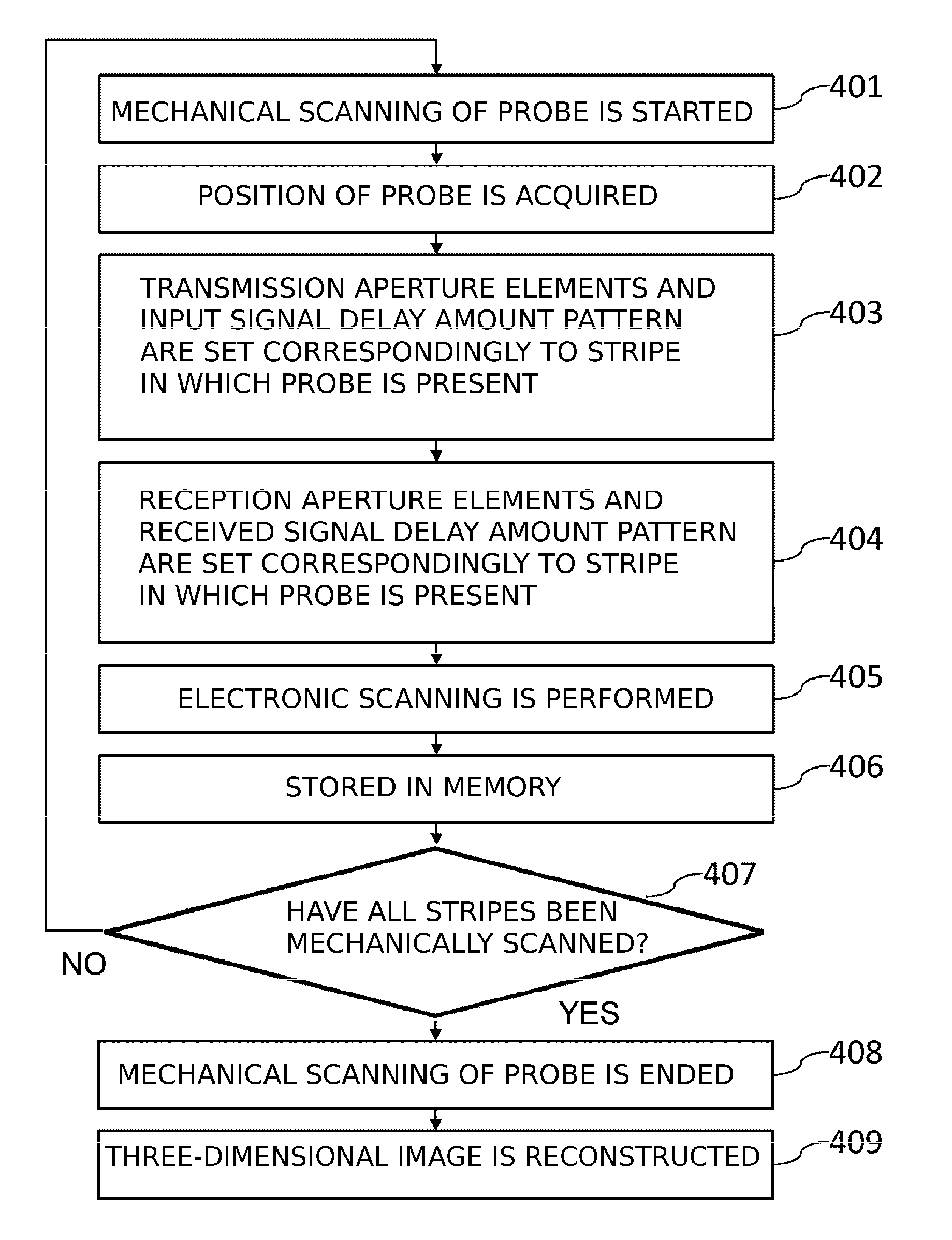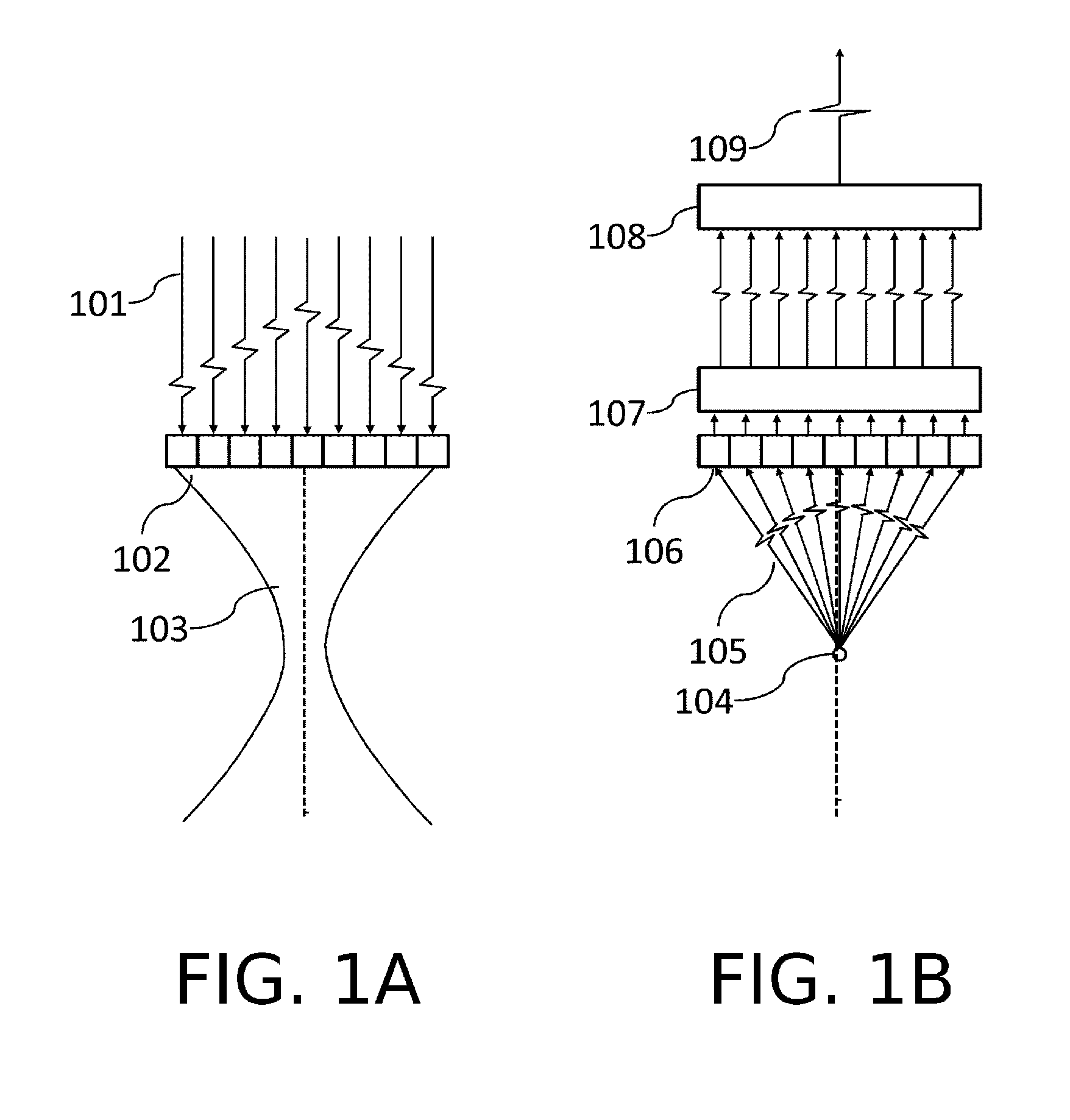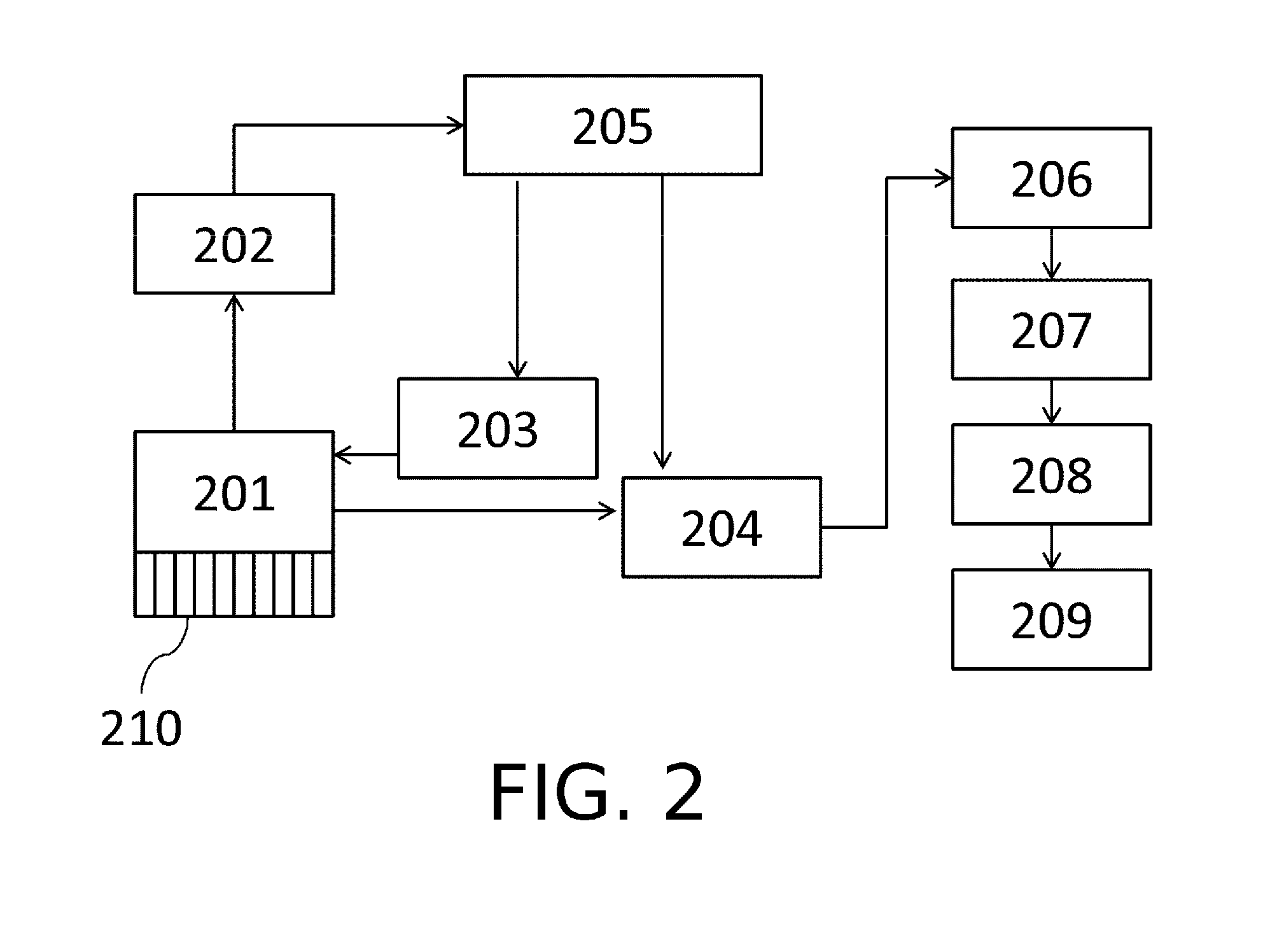Object information acquiring apparatus
a technology of object information and acquisition apparatus, which is applied in the field of object information acquisition apparatus, can solve the problems of inability to acquire preset number of elements in a region, inability to perform imaging with respect, etc., and achieve the effect of enlarge the acquired image region
- Summary
- Abstract
- Description
- Claims
- Application Information
AI Technical Summary
Benefits of technology
Problems solved by technology
Method used
Image
Examples
embodiment 1
Configuration of the Apparatus
[0044]FIG. 2 shows the configuration of the object information acquiring apparatus in accordance with the present invention. The apparatus is provided with a probe 201, a mechanical scanning mechanism 202 for the probe, a transmitting processing unit 203, a received signal processing unit 204, a control unit 205, an image processing unit 206, an image memory 207, an image reconstruction unit 208, and an image display unit 209. A transducer array 210 with one-dimensional arrangement of elements is provided on the probe 201.
[0045]As mentioned hereinabove, an ultrasound transmission / reception beam from the aperture elements on the transducer array 210 is electronically scanned over a tomographic surface and a tomographic image is produced. The probe 201 is fixed to a movable section of the mechanical scanning mechanism 202 and moves together with the movable section. The transmitting processing unit 203 switches aperture elements that are to be driven, gen...
embodiment 2
[0074]In the method explained in Embodiment 1, the number of aperture elements is changed in order to enlarge the imaging region in the secondary scanning direction in the end section of the mechanically scannable range (the end portion of the measurement target region of the object).
[0075]In the present embodiment, by contrast with Embodiment 1, when the probe is positioned in the end section of the secondary scanning range (stripe), the transmitted / received ultrasound beam is deflected to enlarge the tomographic image region.
[0076]FIG. 7 is a conceptual diagram of an input signal for deflecting the transmitted beam. As shown in FIG. 7A, where a pulse signal 701 is inputted into each element of the transmission aperture element row 702 at the same timing, the transmitted ultrasound beam is formed in a direction 703 orthogonal to the element arrangement direction in the transmission aperture element row 702. A position for converging the ultrasound wave can be also set by providing ...
embodiment 3
[0080]In the present embodiment, the mechanical scanning range of the probe is not set at the apparatus side, and an examiner determines the desired mechanical scanning range (examiner's setting range) by using input means.
[0081]Displaying the object picked up with a camera at the image and indicating the examiner's setting range on the image can be used as the input means for the examiner's setting range. The image pickup means is not limited to the camera and other medical diagnostic devices may be also used.
[0082]FIG. 9 is a conceptual diagram illustrating the relationship of image regions acquired by mechanical scanning of an examiner's setting range 902 and the probe 201 (901). A stripe region 903 is superimposed on the examiner's setting range 902 by mechanically scanning the probe 201 in the main scanning direction and secondary scanning direction in the same manner as in Embodiment 1. In this case, a non-imaging stripe region 904 is generated in the mechanical scanning range...
PUM
 Login to View More
Login to View More Abstract
Description
Claims
Application Information
 Login to View More
Login to View More - R&D
- Intellectual Property
- Life Sciences
- Materials
- Tech Scout
- Unparalleled Data Quality
- Higher Quality Content
- 60% Fewer Hallucinations
Browse by: Latest US Patents, China's latest patents, Technical Efficacy Thesaurus, Application Domain, Technology Topic, Popular Technical Reports.
© 2025 PatSnap. All rights reserved.Legal|Privacy policy|Modern Slavery Act Transparency Statement|Sitemap|About US| Contact US: help@patsnap.com



